Next Gen Navigator
Providing a Comprehensive Look at Assessment in California
By Rudy Escobar, Jill Grace, Nathan Inouye, M.Ed., Maria Chiara Simani, Ph.D.
Posted on 2022-05-26
Disclaimer: The views expressed in this blog post are those of the author(s) and do not necessarily reflect the official position of the National Science Teaching Association (NSTA).
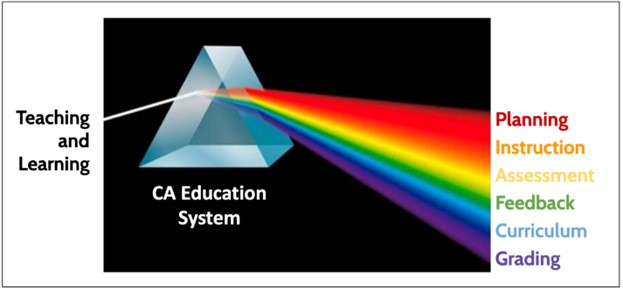
When light enters a prism, light refracts into a full spectrum of colors that comprise white light. Here, the white light represents the teaching and learning that happen daily in K–12 classrooms across California, comprising the spectrum of competencies that all local science educators need to critically examine to help students succeed in science. Assessment is one component of this system. It must happen routinely as part of instruction, as well as be part of a balanced accountability system in which both educators and students receive frequent and meaningful feedback to move teaching and learning forward at the classroom, district, and state levels. Call to Action recognizes this coherent role for assessment in its recommendation regarding systems of assessment and accountability that use multiple points of information to support science education.
In California, the rollout of our new statewide science assessment is being coupled with the inclusion of science assessment data in the California School Dashboard, alongside other measures that together provide a more comprehensive picture of schools’ and districts’ progress. California state science assessments serve two major purposes: (1) they are one important way to monitor students’ proficiency at a certain moment in time, and (2) they provide both the data and an impetus for educators, leaders, and communities to examine how students are being supported in science learning. Performance on state assessments alone, however, is a signal that tells us to look deeper: To understand why student performance looks the way it does, we must consider districts and classrooms, and the assessments and instructional practices that are locally responsive to California’s huge diversity.
Assessments that are responsive to local learning structures are an essential component of the kind of system envisioned by Call to Action:
- Students can use their full range of linguistic and cultural resources to show what they know and how they know it, and use their learning in ways that are authentic and relevant to their lives.
- Educators have access to contextualized information about student progress that can be more readily used to make appropriate shifts to local resources and practice.
- School systems (e.g., districts, networks of schools) can more easily and deeply reflect on the educational outcomes produced by their current systems, analyze them from their students’ and community’s perspective to evaluate needed changes, and establish new tools and structures to monitor growth and support equitable student learning outcomes.
Local assessments that have a clear through line to the state system are critical to ensure that the conversation our state assessment and accountability system has initiated is used to support our diverse educators and student populations, communities, and learning environments. However, this can be a huge task: How do we stay grounded in local contexts while providing statewide assessment supports?
We have a unique network of county office leaders, technical assistance partners, and educators in California, who—in partnership with the state department of education—can address challenges like this. The CA NGSS Collaborative, rooted in both the needs of local communities and a commitment to supporting statewide science education, identified systemic support for local assessment use as the key way to connect statewide assessment efforts to changes in local practice. The Collaborative is developing the CA NGSS Toolkit for Student-Centered Assessment Systems, designed to provide district teams with ongoing support to examine local assessments, student artifacts, and instructional contexts to improve assessment and instruction in coherent and connected ways, using common conceptions around quality as a constant connection to broader components of the assessment system. The professional learning experiences, processes, and tools used in the Toolkit intentionally support connections between local efforts and the larger assessment system and resources available in California, including state science assessment, the SmarterBalanced’s Tools for Teachers, and the California Partnership for Math and Science Education’s NGSS 3D Assessment Modules. Over time, we expect that the systemic support for better local assessments and assessment practices will create both the capacity and infrastructure to build more comprehensive assessment systems, drawing from local and state assessment data to support student learning.
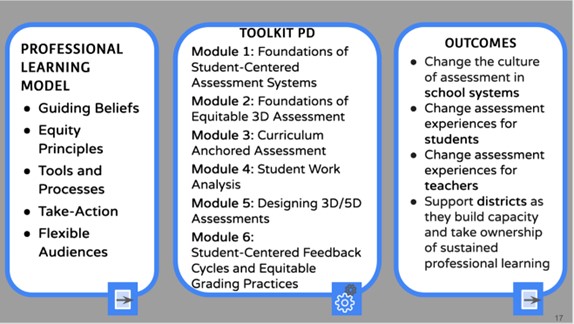
Members of the California NGSS Collaborative authored this blog post. The CA NGSS Collaborative (a statewide coalition of professional learning providers established in 2014, including the California Science Project, California Association of Science Educators, CCSESA County Offices of Education, and the K-12 Alliance @WestEd, in partnership with the California Department of Education) has positioned itself as a unique infrastructure for supporting diverse learning ecosystems across the state by developing and disseminating statewide high-quality professional learning experiences that annually reach more than 800 educator leaders and provide them with free resources to bring back to their schools, districts, and communities. As CA NGSS Collaborative, we continue to examine the different wavelengths of teaching and learning, anchored by our belief that each student in California deserves access to instruction and assessment that enable deep three-dimensional engagement; put them in control of their own learning; and motivate them to figure out phenomena relevant to them.

Rudy Escobar
STEM Coordinator
Stanislaus County Office of Education
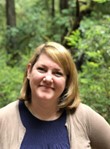
Jill Grace
Director
K–12 Alliance, WestEd
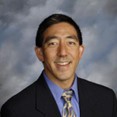
Nathan Inouye, M.Ed.
Science Coordinator
Ventura County Office of Education
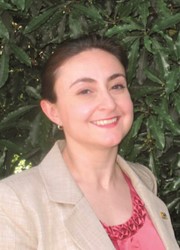
Maria Chiara Simani, Ph.D.
Executive Director, California Science Project
University of California, Riverside
Note: This article is featured in the May 2022 issue of Next Gen Navigator, an e-newsletter from NSTA delivering information, insights, resources, and professional learning opportunities for science educators by science educators focusing on the themes highlighted in Call to Action for Science Education and on the Next Generation Science Standards and three-dimensional instruction. Click here to sign up to receive the Navigator.
The mission of NSTA is to transform science education to benefit all through professional learning, partnerships, and advocacy.


